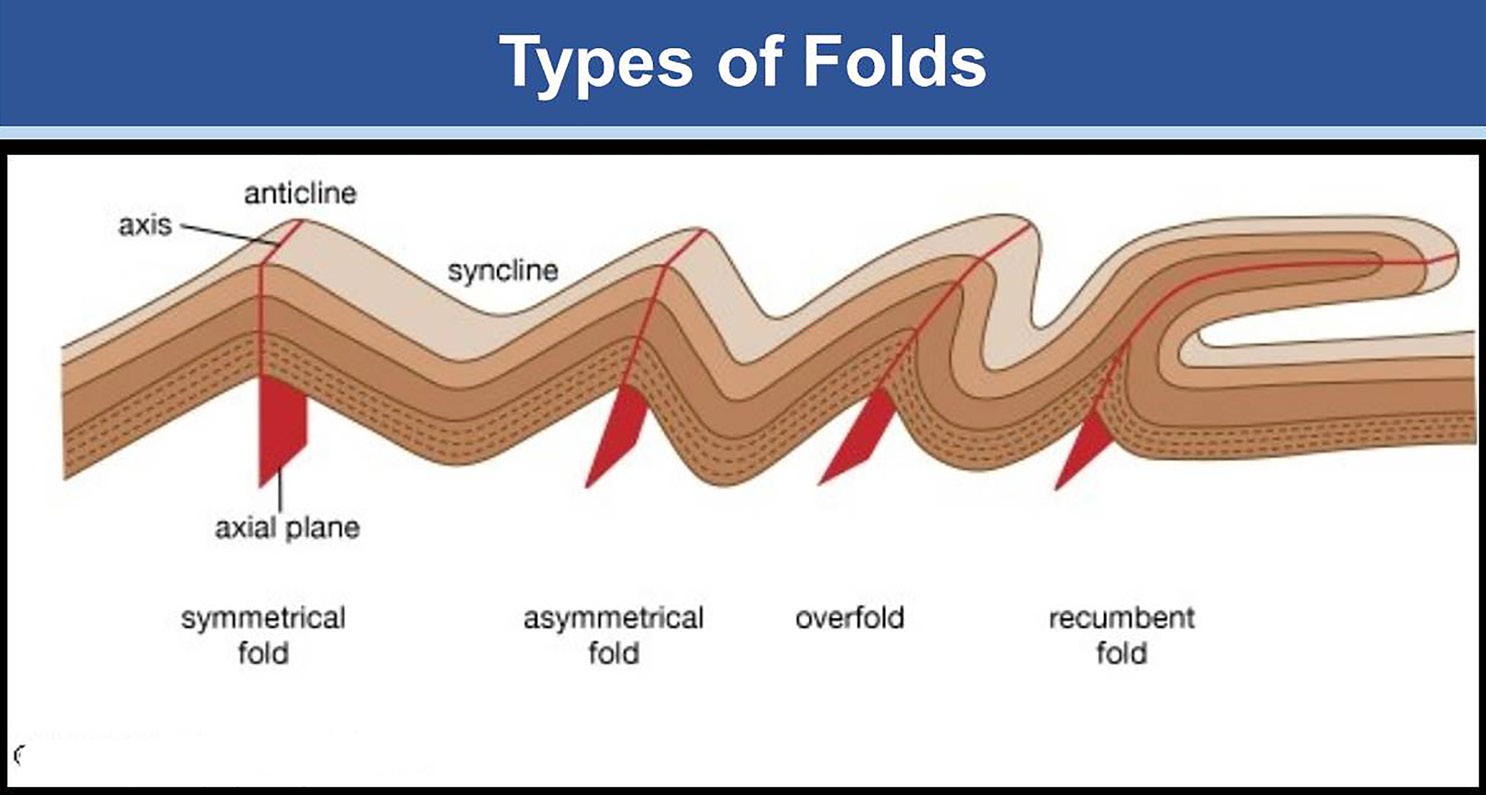Endogenetic Force
Endogenetic Force refers to the force generated from the Earth’s interior. It is responsible for the formation of various landforms through internal movements, and hence, it is also known as ‘constructive movement.’ These forces create landforms on the Earth’s surface, which are then transformed into flat plains by external forces, earning them the name ‘destructive landforms’ produced by ‘isostatic force.’
Endogenetic Sudden Movement
Endogenetic Sudden Movements are sudden events that cause destructive changes both above and below the Earth’s surface. Examples include earthquakes and volcanic activities.
Diastrophic Movement
Diastrophic Movement is the long, horizontal movement caused by slow motion within the Earth’s interior. It leads to the formation of continents and mountains. There are three types of diastrophic movement:
- Epeirogenic Movement: Leads to the formation of landforms.
- Static Movement: Attains a balanced state of landforms.
- Stable Movement: Occurs in the oceans, also known as epirogenic movement.
Epirogenic Movement
Epirogenic Movement is the long, horizontal endogenetic movement generated by slow motion. It involves the uplift and subsidence, as well as the emergence and submergence, of continents.
- Upward Movement: When a part of a continent rises above its adjacent surface, it is called upliftment or emergence.
- Downward Movement: When a part of the land descends or sinks underwater, it is called subsidence or submergence.
Orogenetic Movement
Orogenetic Movement derives from the Greek words ‘oros’ (mountain) and ‘genesis’ (formation). It involves the tangential forces that lead to mountain formation. Tensional forces create faults, fractures, and cracks in the Earth’s crust, leading to the creation of ‘obstructive mountains,’ while compression forces result in warping and folding in crustal rocks.
Folds and Their Types
Folds occur due to compression by internal forces in the Earth’s crust, resulting in rocks forming wave-like structures. The various types of folds include:
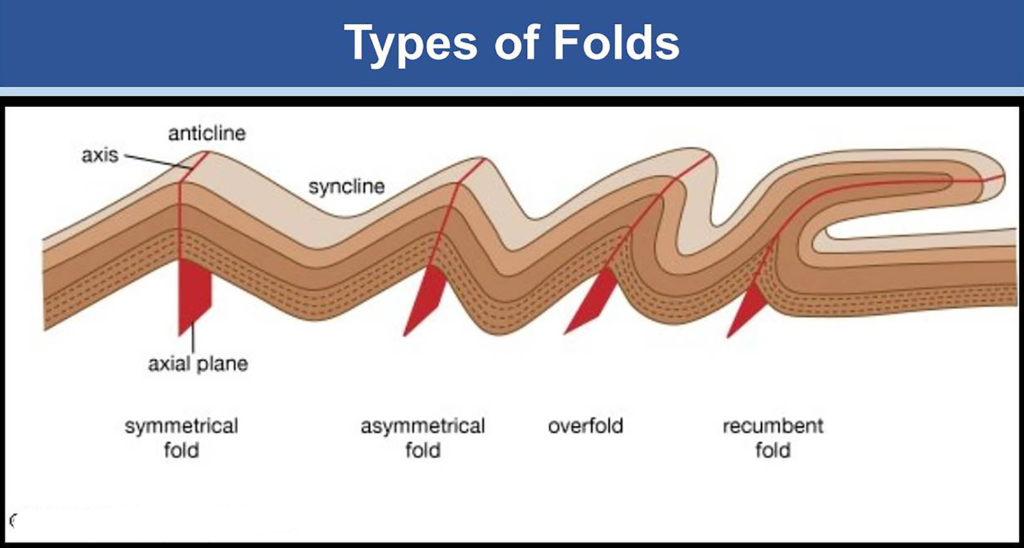
- Symmetrical Fold: The fold in which the limbs and arms are equal is called a symmetrical fold.
- Asymmetrical Fold: The fold in which the limbs have different natures is called an asymmetrical fold. One limb of this fold is common and distant, while the other limb is steep and close.
- Monoclinal Fold: The fold in which one limb is at an angle of 90 degrees and the other at an angle of less than 90 degrees is called a monoclinal fold.
- Isoclinal Fold: In this fold, the limbs are parallel, but not in the horizontal direction. They are formed by equal compressive forces. Due to their close proximity, the possibility of limb fractures remains.
- Recumbant Fold: A fold with parallel limbs is called a recumbant fold.
- Overturned Fold: When the force of formation of a fold is very strong, one limb is overturned on another. This is called an overturned fold.
- Overthrust Fold: This is the progression of a recumbant fold and an overturned fold. When horizontal movement and compression become very dominant, the layers of rocks on the fold break at an axis and rise above each other or are imposed on each other. In such a situation, these rocks come on top of the folds. The reverse structure in the sequence of rocks is called thrust, the surface from which the rocks rise is called the thrust surface. The upper lifted part of the fold is called an overthrust fold.
- Nappe: After the formation of recumbant folds, when horizontal movement and compressive force become very dominant, a section of these folds breaks and is displaced on another section, which is called a nappe. Nappes are found in fold mountains like the Alps and the Himalayas. Nappes such as the Helvetic, Pennine, Austroalpine, and Dinaric nappes are very important in the Alps. In the Himalayas, nappes like the Pilgrim, Kumaon, Garhwal, etc., are important. Nappes create complexities in structure and confusion in geomorphology. Old rocks appear on new rocks. At the same time, other nearby rocks are relatively new. Nappes are considered most important in creating reverse structures.
- Autochthonous Nappe: In this, a part of the nappe breaks and is juxtaposed on the other part in the vicinity. For example – coal.
- Allochthonous Nappe: In this, a nappe of a fold breaks along the axis of folding and travels hundreds of kilometers to be juxtaposed on another ridge. The connection of this distant nappe is not with the local ridge on which it is imposed.
- Plunging Fold: When the axes of the folds are not parallel but inclined towards each other, they are called plunging folds.
- Fan Fold: When the folding – forming force comes continuously, waves are generated in the limbs and crests, resulting in the formation of multiple small crests and troughs. This kind of fold is called a fan fold.
- Open Fold: When the angle between the limbs of the fold is more than 90° but less than 180°, it is called an open fold
- Closed Fold: When the angle between the limbs is less than 90°, it is called a closed fold. This type of fold has a more compressive or compressive force, making the limbs come closer in a vertical direction.
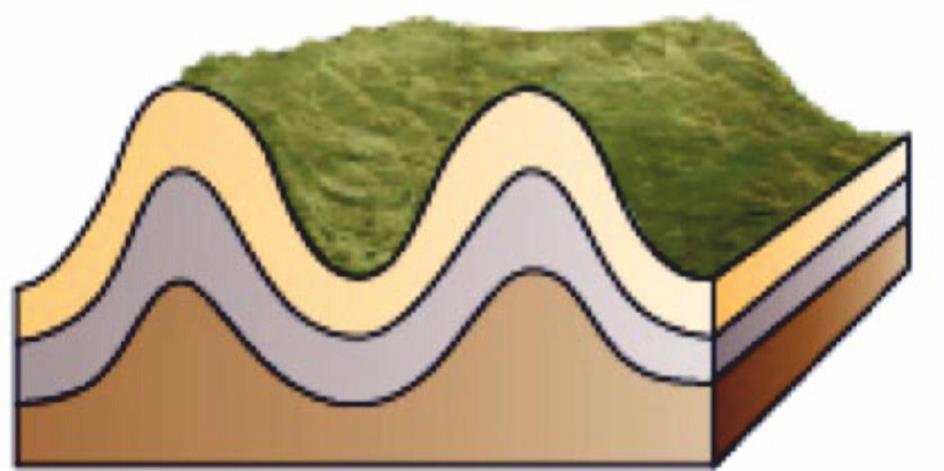
Faults
A fault is a fracture or discontinuity in the Earth’s crust caused by the intensity of tectonic movement, where displacement of rock layers occurs along a plane. The plane along which the fault is formed is called the fault plane. The types of faults include:
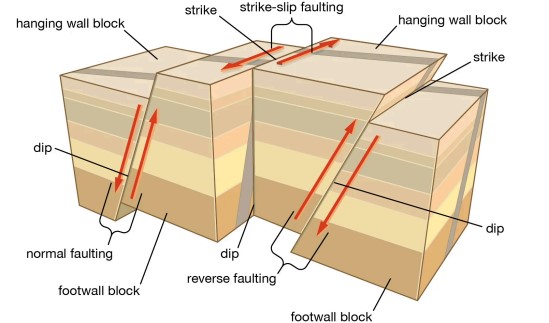
- Normal Fault: When rock layers on either side of a fault plane move in opposite directions, a normal fault is formed.
- Reverse Fault: When rock layers on both sides of the fault plane move towards each other and one layer is pushed over the other, a reverse fault is formed.
- Lateral Fault: When there is horizontal movement between rock layers on a fault plane, a lateral fault is formed, with the formation of structures being very limited.
- Step Fault: When multiple parallel faults in a landform have the same orientation of fault planes, it is called a step fault..
- Tear Fault: Tear fault occurs when the pressure (compression) from two opposite directions causes the blocks of the crust on either side to slide or move laterally instead of sinking or rising vertically. This lateral movement can extend for several kilometers. The San Andreas Fault in California is an example of this type of fault. A similar fault can be found in the Garhwal-Uttarkashi region of the Himalayas. In these types of faults, the formation of scarps is usually not prominent.
Fault Activity and Related Features
- Fault Activity: Through fault activity, some parts of the crust move up while others move down, resulting in the formation of various landforms such as rift valleys, block mountains, horsts, grabens, etc.
- Fault Scarp: Fault scarp is a long or steep slope created by normal faulting, which can range in height from a few meters to several hundred meters.
- Fault Block: Separate blocks of rock formed due to faulting on either side of a fault plane, which can be either uplifted (upthrown) or down-dropped (downthrown). The uplifted block is called the upthrown block, while the down-dropped block is called the downthrown block.
- Block Mountains (Horst): When a section of land between two fault lines rises while the surrounding area either sinks or remains in its original state, the raised section is called a block mountain or horst. They are also known as “horsts” in Germany. The Vosges Mountains in France, the Harz and Black Forest in Germany, the Sinai Peninsula, and the Korean Peninsula are examples of block mountains.
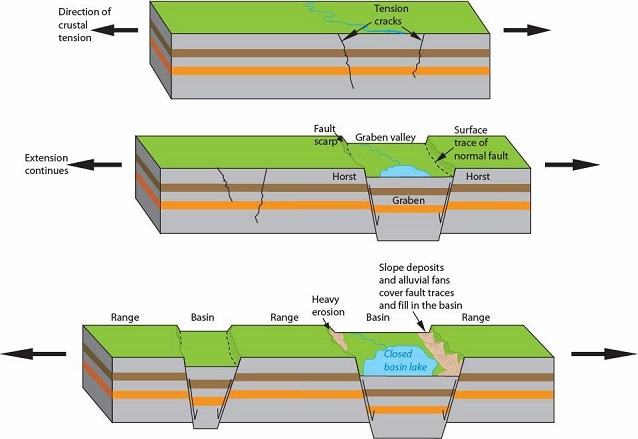
- Rift Valley (Graben): A rift valley is formed when the middle portion between two normal faults drops down due to subsidence or remains in its original position, creating a depression. This depression between two normal faults is called a rift valley. It is formed in a completely opposite manner to a horst. In German, it is called a “graben”. Some of the largest rift valleys in the world extend from Syria to the Dead Sea, the Jordan Valley, the Gulf of Aqaba, the Red Sea, Lake Rudolf, Lake Albert, Lake Edward, Lake Tanganyika, Lake Rukwa, Lake Nyasa, and the Zambezi River. Other examples include the Rhine Valley in Germany, the Midland Valley in Scotland, the Baikal Rift in the Soviet Union, and the Narmada and Tapti valleys in India.
- Ramp Valley: When both sides of two parallel faults rise above the intervening section and there is a cyclone in the middle, such a valley is called Ramp Valley.
Exogenetic Force
Exogenetic Force involves processes like erosion, deposition, and weathering that lead to physical and chemical changes on the Earth’s surface. These processes result in the formation, development, and destruction of various landforms.
Landslides
A Landslide is the collective movement of large quantities of rocks or debris from a mountain or hill slope. This process is driven by gravitational force, making landslides more impactful in steep mountainous regions.

